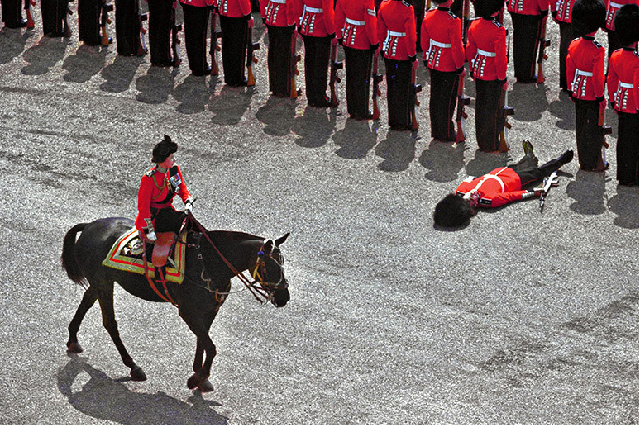Today marks the 14th anniversary of the devastating attacks that rocked the United States, and raised public consciousness of the threat of modern terrorism. Reflecting on the milestone, Bruce Hoffman at Politico states that just four years ago the world had terrorism ‘on the run’—but now, inadequate global responses to an entirely new brand of terrorist have led to abject failure to stem the problem. Hoffman argues that rolling ISIS back from Iraq and decreasing its regional and virtual sanctuaries is a crucial first step to countering the threat.
With no sanctuaries of their own, refugees fleeing the violence in Syria have been sent messages of solidarity and welcome from all corners of the globe. The Washington Post covered the Japanese response to the crisis, which, although lucrative (Prime Minister Abe offered US$200 million in aid to refugees displaced by the crisis earlier this year), hasn’t yet included the offer of resettlement placements. To compliment the sentiment that Europe should be doing more to welcome the exodus (see this Economist piece, for instance) the Washington Post has published a series of maps denoting countries’ demographical make-up as the reason behind their rejection or embrace of refugees.
A bit closer to home, Fairfax has republished a SMH piece from 1949 highlighting Australia’s response to the post WWII refugee crisis where we ‘didn’t stop the boats, we let them in’. Statistics referred to in the piece show that Australia, at the time, was accepting displaced people at a higher rate than any other country.
Across the Pacific, in a concerted effort to never disappoint, presidential hopeful Donald Trump has, in less than 24 hours, backtracked on his claim that the US should be making room for more Syrian refugees. In a CNN interview, Trump said that the US should be fixing its own ‘big problems’ rather than focusing on refugees. For a longer read on what’s been dubbed ‘The Donald Trump Situation’, check out Michael Tomasky’s piece for The New York Review of Books, which examines the spectacle of the Republican candidate who has survived political scandals of his own making in an almost ‘Rasputin-like’ fashion.
For a contrasting view on US foreign policy, DefenseOne has summarised Hillary Clinton’s Wednesday address at the Brookings Institute on the Iran Deal. For more details on the five pillars of her Iran strategy, and to watch Clinton deliver the address, see Brookings’ summary of the event.
With 23,226 days under her belt (or crown) as the reigning monarch of the UK and 15 Commonwealth countries, Queen Elizabeth II became Britain’s longest serving ruler on Wednesday, to the joy of monarchists worldwide. The Economist has a good graph showing the length of life before accession, reign and life after reign of all of England’s monarchs, as well as an interactive map of the British Empire’s evolution throughout history.
And finally, friendly tradition digressed to all-out warfare at the West Point campus of the United States Military Academy, when students invited to partake in the Academy’s annual pillow fight chose to not wear the required protective helmets, but rather, stuff them into pillow cases and beat their fellow classmates with their innovative weapons. For visuals on what not to do at your next sleepover, see here.
Podcasts
On 8 September, John McCarthy, Ian Hall and Meg Gurry met at Old Parliament House to debate the relationship between Delhi and Canberra, and how both government and citizens can help to improve the two countries’ links. Listen to the discussion here (1hr 26mins).
Foreign Policy’s David Rothkopf sat down with Rosa Brooks, Kori Schake and Robert Kagan to explore key aspects of the Iran Deal (33mins), and the Obama administration’s Middle Eastern foreign policy. As the second podcast released by FP, it’s certainly worth a listen.
Videos
Iran—it’s so hot right now. Martin Indyk of Brookings, who spoke at the Seminars at Steamboat in Colorado last week, summarised his stance on the Middle East’s two most prominent current issues: the JCPOA and Arab-Israeli peace (which hasn’t made the ‘in’ list). Watch the video of his speech here (1hr 16mins).
ASPI’s Natalie Sambhi and Lowy’s Merriden Varrall discuss (28mins) the major goals of China’s leaders, what exactly is happening in the South China Sea, and how external actors should best engage with China in the latest edition of Bloggingheads.tv’s Foreign Entanglements series
Events
Canberra: A big week ahead for Canberra Indonesianists—ANU’s Indonesia Project is hosting its 2015 Indonesia Update Conference on 18-19 September, with a focus on land law in a decentralised Indonesia. If a two day conference isn’t enough for you, start off with the AIIA’s panel discussion on 17 September on the 50th anniversary of the Jakarta coup that saw the demise of the Indonesian Communist Party.
Sydney: The University of Sydney is hosting a short series of lectures on the ruins of Palmyra—former tourist magnet, current ISIS territory—in honour of slain archaeologist Khaled al-As’ad. Mark your diaries for 16 September.
Melbourne: Steven Freeland from the University of Western Sydney will be answering some prominent questions about the future of space-related technology and entrepreneurship at AIIA’s Victorian branch on 17 September. Here at The Strategist, we remain optimistic that it won’t include nuking Mars into becoming an earth-like planet—an idea recently put forward by SpaceX CEO Elon Musk on Stephen Colbert’s Late Show.
